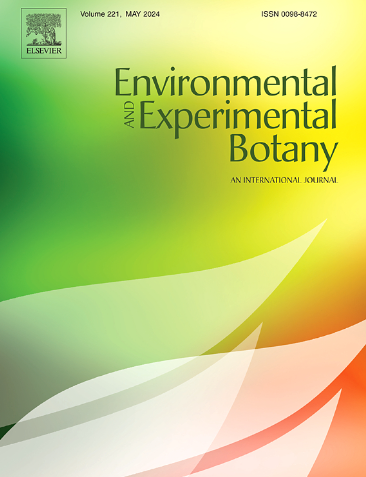Water conservation and assimilation is driven by stomatal behaviour in industrial hemp (Cannabis sativa L.)
IF 4.5
2区 生物学
Q2 ENVIRONMENTAL SCIENCES
引用次数: 0
Abstract
As rainfall becomes increasingly erratic due to climate change, reliable water availability for crops will decrease, leading to reductions in crop productivity. Crops that can moderate water loss during periods of water deficit but rapidly upregulate physiological and photosynthetic processes when water is available will be valuable. In a controlled environment study, we used gas exchange and chlorophyll fluorescence methods to investigate how industrial hemp (Cannabis sativa L.) responds to differing watering frequencies (well-watered every two, four, or six days). Here, we report that hemp has a strong conserved relationship between stomatal conductance (gs) and assimilation (An), limiting water loss at the expense of biomass production. Generally, hemp exhibits low gs relative to high An, meaning that while a decrease in gs limits An, it shows favourable high intrinsic water use efficiency (Wi). Hemp stomata respond quickly to water re-supply, recovering rapidly from periods of water deficit via stomatal behavioural mechanisms and rapidly upregulating An. These stomatal behaviour traits mean hemp may be a suitable choice for water-efficient cropping in climates with sporadic water availability. Rapid stomatal responses in hemp could also be used to understand the interactions between An and Wi, and to help meet plant productivity targets without significant water losses.
工业大麻(Cannabis sativa L.)气孔行为驱动水分保持和同化
由于气候变化,降雨变得越来越不稳定,作物的可靠水分供应将减少,导致作物生产力下降。在缺水期间能够适度失水,但在有水可用时能够迅速上调生理和光合过程的作物将是有价值的。在受控环境研究中,我们使用气体交换和叶绿素荧光方法来研究工业大麻(Cannabis sativa L.)对不同浇水频率(每2天、4天或6天充分浇水)的反应。在这里,我们报道了大麻在气孔导度(gs)和同化(An)之间有很强的保守关系,以牺牲生物量生产为代价限制水分损失。一般来说,大麻表现出低gs相对于高An,这意味着虽然gs的减少限制了An,但它表现出有利的高内在水分利用效率(Wi)。大麻气孔对水分补给反应迅速,通过气孔行为机制从水分亏缺期迅速恢复,并迅速上调氨氮。这些气孔行为特征意味着大麻可能是在零星水分可用性气候下节水种植的合适选择。大麻的快速气孔响应也可以用来了解An和Wi之间的相互作用,并帮助在不显着水分损失的情况下实现植物生产力目标。
本文章由计算机程序翻译,如有差异,请以英文原文为准。
求助全文
约1分钟内获得全文
求助全文
来源期刊

Environmental and Experimental Botany
环境科学-环境科学
CiteScore
9.30
自引率
5.30%
发文量
342
审稿时长
26 days
期刊介绍:
Environmental and Experimental Botany (EEB) publishes research papers on the physical, chemical, biological, molecular mechanisms and processes involved in the responses of plants to their environment.
In addition to research papers, the journal includes review articles. Submission is in agreement with the Editors-in-Chief.
The Journal also publishes special issues which are built by invited guest editors and are related to the main themes of EEB.
The areas covered by the Journal include:
(1) Responses of plants to heavy metals and pollutants
(2) Plant/water interactions (salinity, drought, flooding)
(3) Responses of plants to radiations ranging from UV-B to infrared
(4) Plant/atmosphere relations (ozone, CO2 , temperature)
(5) Global change impacts on plant ecophysiology
(6) Biotic interactions involving environmental factors.
 求助内容:
求助内容: 应助结果提醒方式:
应助结果提醒方式:


